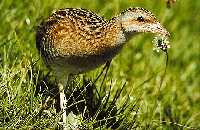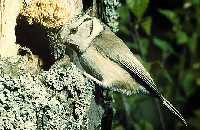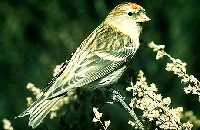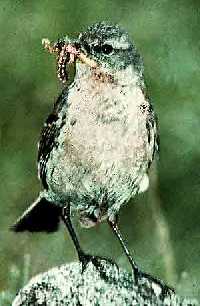Search for: |
General | Geography | History | Nature- | Climate, weather | Nature conservation | Geology, geomorphology | Flora | Fauna | Tourism- | Tourist Information | Tourism | Outdoor sports | Sights | Celebrities- | Artists | Entrepreneurs | Sportsmen
Activities(found: 12 out of 95 records in category: Activities) Peat moors and tundra environment on the Giant Mountain ridges are called "islands of the Arctic in the centre of Europe". Bluethroat is typical evidence that the description fits. In the Giant Mountains there nests a limited population of 25 - 30 couples. To see others we have to visit Scandinavian peat moors. This species belongs among the rarest and most beautiful birds of the Giant Mountains. Another Giant Mountain curiosity can be watched only on the highest peaks, preferably in the detritus of the Sněžka mountain. The Giant Mountains are the northest area of its worldwide occurrence. Though the population of alpine accentors is very small and does not exceed 15 - 20 couples, it has already remained on this level for many years. Forest gallinacean birds of the Giant Mountains are represented by three species: capercaillie, hazel grouse and grouse. While the first two are only one step from their extinction (in connection with dying of forest and excessive disturbance), grouse likes the vast bleak areas and its population grows. It belongs among endangered species of the Czech Republic, but in the Giant Mountains there are now about 150 males of this bird. Everybody knows white stork even from the childhood, but the black relative of his is not so well known. Though it is of almost the same height, but it nests in forests. It hunts skilfully along the hidden montane creeks and lets us see him only when hawking high above in the sky. So look carefully: the belly is white but the neck and wings are all black. And it is more frequent in the Giant Mountains than white stork. The most frequent bird nesting in the Giant Mountains: each fifth bird within the mountain range and even every third one in the local forests in this finch. We can watch it in all kind of environments from lowlands to the upper forest limit, rarely in dwarf pine growths and never on the highest peaks of no bushy vegetation. If any Giant Mountain bird merits an attribute "invisible", then corncrake is without competition. Though the voice sounds from the montane meadows into long distance, it is absolutely impossible to see the owner. Even the voice sounds as if it belongs to an old cracked branch than to a bird: repeating crex-crex-crex-crex-crex (its voice, put on the paper as "krex-krex" became also basis for its Latin name.) And besides, it most frequently sounds from the dark. Very numerous genus of tits contains also six Giant Mountain species: great tit, marsh tit, blue tit and in the lower areas while coal tit, crested tit and willow tit in the upper ones. . Crested tit with a topknot on its head is a typical species of spruce forests, which sensitively reacts to the forest damage. In is quite numerous in the healthy or slightly damaged forests, while it disappears completely from the hardly damaged and dying ones. The reason lies mainly in the lack of suitable food as well as shelters protecting them from severe weather and enemies. But the situation is the same for other bird species such as goldcrests- our smallest birds. A bird species which way of life is bound entirely to running water. It nests near the water, catches food under water and can move very skilfully. Just stand for a while at a frozen river in winter: dipper jumps through one hole into the freezing stream and after a moment it jumps out through another, which can be several metres distant from the first one. How perfectly protective feathers Another species that nested originally only in the dwarf pine growths above the upper forest limit, but recently has descended to lower altitudes including the Giant Mountain base areas. Nevertheless the largest number of this bird can still be found in the scrub growths. It is one of the birds, which can not escape our attention when on a trip along the mountain ridges. We can recognize it easily by its typical cricket-like voice. A well known black bird with a white crescent on the chest. Is it nonsense? No, this is just how ring ouzel looks. Another typical representative of montane birds is quite frequent in the Giant Mountains. One of almost 300 nesting couples can be found easily on the montane meadows and forest rims. But only up in the mountains,as it does not come under the altitude of 800 metres above sea level. Small, inconspicuous owl. It can't be seen but can be heard. If we hear in montane spruce forest a repeated puh-puh-puh-puh-puh-puh resembling distant steam machine, it is Slovakia, as there are no steam machines in the Giant Mountains any more. And there is quite a chance to hear this voice as approx. 100 couples of this bird nest here. There are not many bird species, which welcome the Giant Mountain forests dying off, but meadow pipit belongs among them. They nested originally only on the meadows above the upper forest limit, but today they colonise also the vast bleak areas in the centre of the forests and their population grows continuously. |


















